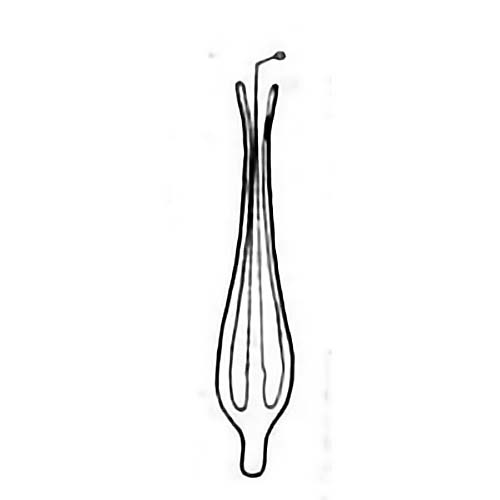tiehuang overview
 Iron Reed (Pinyin: Tiě huáng), also known as mouth-holding qin, mouth-playing qin. It is made of copper or iron, and it is also made of bullet casings. The common ones are pincer-shaped, ring-shaped, sword-shaped, leaf-shaped, pear-shaped and so on. The iron fee described in the "Tongdian of the Qing Dynasty" is in the wrong shape. This kind of iron spring is more popular in the Daur and Hezhe ethnic groups in Northeast China, the Kirgiz ethnic group in Xinjiang, the Salar ethnic group in Qinghai, and the Yao ethnic group in Guangxi.
Iron Reed (Pinyin: Tiě huáng), also known as mouth-holding qin, mouth-playing qin. It is made of copper or iron, and it is also made of bullet casings. The common ones are pincer-shaped, ring-shaped, sword-shaped, leaf-shaped, pear-shaped and so on. The iron fee described in the "Tongdian of the Qing Dynasty" is in the wrong shape. This kind of iron spring is more popular in the Daur and Hezhe ethnic groups in Northeast China, the Kirgiz ethnic group in Xinjiang, the Salar ethnic group in Qinghai, and the Yao ethnic group in Guangxi.There are many beautiful legends about iron springs from all ethnic groups. On the Sanjiang Plain of Heilongjiang Province in the northeast, there is a legend among the Hezhe people: There was a plague in a village in the past, and only a nursing child was left. Life. She sang the tragic experience to everyone. Later, her voice became hoarse, and the old man made an iron reed for her. Since then, the iron reed has been handed down among the Hezhe people, and it is also called the sad qin. Later, young men and women used it to express their love. Daur men go out hunting, and women play iron springs at home to show their nostalgia. During the weddings and celebrations of the Manchu folk, it is customary for women and children to play iron reeds in unison in front of the door, and it is also used to accompany shaman performances. Today, minority women still love this instrument. Iron reeds are still the most popular musical instruments in the Yi area of Liangshan, Sichuan.
The iron reed has only been clearly recorded in the literature since the Han and Wei Dynasties, indicating that it is a musical instrument made of iron that is played horizontally in the mouth. In the Eastern Han Dynasty, Liu Xizai said: "...the spring is also horizontally applied to the middle of the tube head; it is also made of bamboo and iron, and the drum is horizontally applied to the mouth." Chen Mianzai of the Northern Song Dynasty In the "Music Association (Volume 1, 2, 3), there are: "There are springs in the air, and there are springs that are not signed." The latter refers to the iron spring. And in (Le Book) (Volume 131) contains the iron leaf spring that was popular in the folk at that time, which is the earliest image seen in the literature. Stuffed with wax honey, it is horizontal to the mouth, and the breath becomes sound, how can the spring be soft?" In the Qing Lang Tong Dian, written by Emperor Qianlong of the Qing Dynasty, it is recorded that when Huang Taiji pacified the Mongolian tribe Chahar, he had obtained a kind of The Mongolian music "pin blowing", which is played by four kinds of musical instruments, hujia, huqin, koujieqin and six-stringed zheng, said when talking about the koujieqin: "It is made of iron, one handle and two strands, with a meal in the middle and a meal at the end. Out of the stock. The horizontal reed turns the tongue, and the shush sucks into the sound." In the "Da Qing Hui Dian Tu" (Volume 40) and Liu Jinzao's (Qing Dynasty Continued Documents General Examination), there are also detailed descriptions and drawings of the iron spring. .
- Pinyin:Tiě huáng
- alias:Harmonica
- material:copper or iron
- Make good use of the area:Sichuan Liangshan Yi area
overview of other similar instruments
- sanyanxiao overview
- Daguangxian overview
- Leiqin overview
- hahao overview
- yandundagu overview
- Han Xiaozheng overview
- Fang Xiang overview
- guanzi overview
- zhuqin (Dao Qin) overview
- zhuiqin overview
- bangzi overview
- three-stringed piano overview
- Gehu overview
- xiao overview
- xiaokonghou overview
- Konghou overview
- Sheng overview
- suona overview
- hulusi overview
- gushao overview
 渝公网安备 50010702504639号
渝公网安备 50010702504639号